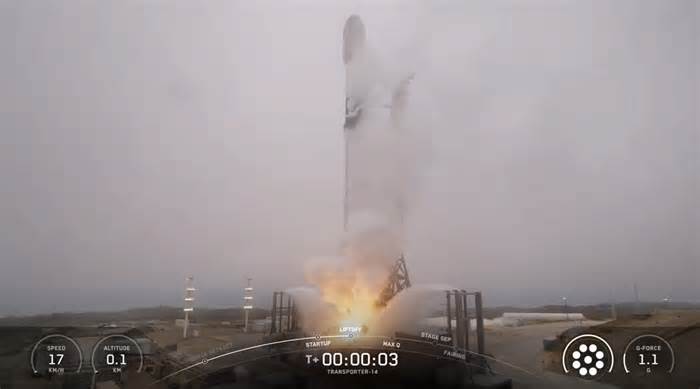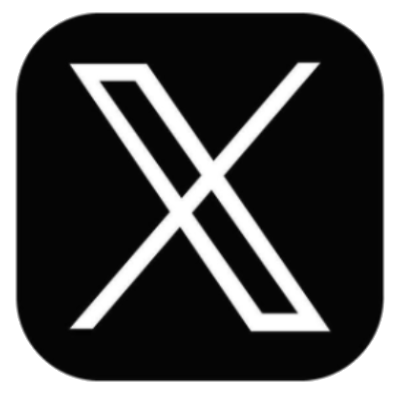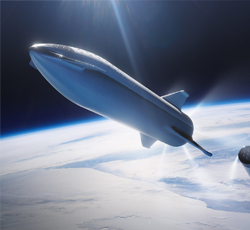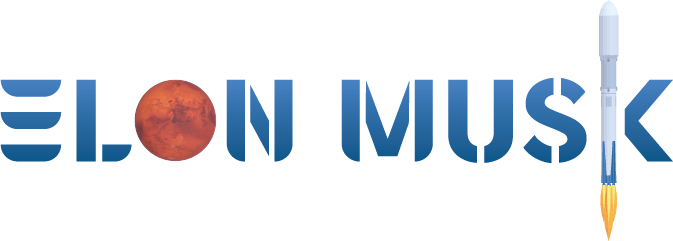
SpaceX launches Transporter 14 rideshare mission
- by NASASpaceFlight.com
- Jun 25, 2025
- 0 Comments
- 0 Likes Flag 0 Of 5

— SpaceX (@SpaceX) June 22, 2025
The booster landed safely on SpaceX’s Of Course I Still Love You droneship downrange in the Pacific. A return-to-launch-site landing was initially set to be the first stage recovery method, but SpaceX announced a change in a pre-launch press release. Completing a return-to-launch-site recovery depends on the booster having enough reserve performance after meeting primary mission requirements.
The second stage and rideshare payloads entered a parking orbit, and multiple in-space burns were conducted. The payloads were released in multiple sequences, and the German company Exolaunch deployed 45 satellites with their payload deployment hardware on this flight. Other service providers also launched payloads for customers, and there were 70 payloads overall including two reentry capsules onboard Transporter 14.
Exolaunch deployment hardware. (Credit: Exolaunch)
International cubesats
Exolaunch, a company spun off from Technische Universitat Berlin, offers launch services and mission management for small satellite operators. Prior to this mission, the company launched 530 satellites on 36 launches across vehicle types ranging from Rocket Lab’s Electron to SpaceX’s Falcon 9, India’s PSLV, Ariane 6, and other rockets.
Transporter 14’s complement of Exolaunch payloads was the largest deployment on one mission for the company. For this mission, the company had 25 new or returning customers from various countries, and deployed cubesats up to 16U in size as well as microsatellites massing up to 250 kg.
Exolaunch’s customers for this flight were from the United States, the United Kingdom, Lithuania, Finland, Belgium, Germany, Australia, Canada, South Korea, France, Japan, Spain, Norway, Italy, and Greece.
Gilmour Space and Exolaunch personnel posing by ElaraSat. (Credit: Gilmour Space)
On this flight, one of the notable payloads to be deployed by Exolaunch included Gilmour Space’s ElaraSat bus. The 100 kg MMS-1 satellite, built by the Australian company that also developed the Eris launch vehicle, contains a hyperspectral imager from the Australian CSIRO agency that will be used to study water quality from space. MMS-1 was the first launch of Gilmour’s satellite bus.
Another payload manifested by Exolaunch was the VanZyl-2 Earth observation satellite. VanZyl-2 will use a thermal infrared imager and is Hydrosat’s second satellite for its constellation. Together with VanZyl-1, already in orbit, the two satellites will image over 10 million square kilometers per day and will be able to observe remote areas in cloudy conditions using nine spectral bands. These satellites fill a gap left by the Landsat satellites in the field of Earth observation technology.
The VanZyl-2 satellite. (Credit: Hydrosat)
Exolaunch flew the German Quick3 3U CubeSat. Quick3, developed by a consortium led by the Friedrich-Schiller-Universitat Jena and built by Konigsberg NanoAvionics, is designed to test quantum communications in orbit. The mission will also test fundamental principles of quantum physics in microgravity.
Konigsberg NanoAvionics flew five additional payloads on this mission through Exolaunch. One of these payloads, an effort by NASA and Wichita State University, is designed to detect neutrinos; if it detects a neutrino, it will be the first time this has been achieved in space. Other payloads will expand imaging constellations, demonstrate voice communications for monitoring air traffic, and image New Zealand before deorbiting with a dragsail.
D-Orbit, based in Como, Italy, is flying ION vehicles 18 and 20 on this flight. D-Orbit is another European company offering rideshare services to satellite customers with its ION Satellite Carrier. For this flight, the company is hosting a 5G communications payload from France and a propulsion system built by Pale Blue of Japan.
Xona’s Pulsar-0 before its launch. (Credit: Xona Space Systems)
UARX Space Solutions, based in Spain, was manifesting its OSSIE orbital transfer vehicle, carrying five passenger payloads, but OSSIE was removed at the last minute. NPC Spacemind flew two 16U cubesat deployers, while Xona Space Systems of Burlingame, California, was flying its Pulsar-0 navigation satellite.
Other satellite payloads included the University of North Dakota’s two 3U CubeSats, the University of Auckland’s 3U CubeSat, Starfish Space’s Otter Pup 2, and Capella’s Acadia-7 synthetic aperture radar Earth observation satellite. Satellites for ICEYE and HUBBLE constellations were also on board. The Starfish Otter Pup 2 will attempt the first-ever docking with an unprepared commercial satellite, unmodified for docking, in low-Earth orbit.
NASA’s PolArization and Directivity X-ray Experiment (PADRE) was also on board. PADRE and its two instruments will observe the Sun in X-rays to study polarization from solar flares. NASA’s Goddard Space Flight Center is collaborating with the University of California Berkeley Space Sciences Laboratory, the Southwest Research Institute, and two institutions in Europe on PADRE.
The Varda W-4 reentry capsule. (Credit: Varda Space Industries)
Reentry capsules
Besides the varied array of cubesats and other spacecraft on this flight, two reentry capsules flew aboard Transporter-14. Varda Space is flying the fourth of its Winnebago capsules, known as W-4. W-4 is carrying a pharmaceutical payload and will try a solution-based crystallization manufacturing process. This process can make structures that are otherwise impossible to produce on Earth.
W-4 is the first spacecraft solely built by Varda. The company’s three previous missions used buses made by Rocket Lab. W-4 also features Varda’s first in-house heat shield, made up of a version of the Phenolic Impregnated Carbon Ablator (PICA) shield used by spacecraft like Crew Dragon. Conformal-PICA was developed by NASA, which is working with Varda on C-PICA’s commercial production.
Varda’s W-3 after landing safely at the Koonibba Test Range in Australia. (Credit: Varda Space Industries)
Varda also now holds a Part 450 license from the Federal Aviation Administration, effective for five years, which allows for unlimited capsule reentries under the same license, provided Varda uses the same flight profile. Although the first Varda capsule was recovered at the Utah Test and Training Range near Dugway Proving Ground, the company’s primary recovery site is now in the Koonibba Test Range in Australia.
Celestis Space contracted with Munich and Bordeaux-based The Exploration Company to fly its “Perseverance” space funeral mission on its Nyx capsule. The Nyx capsule has a payload capacity of up to 300 kg, and the spacecraft is 2.5 m in diameter.
This capsule is also a subscale test of a larger, four-meter-diameter Nyx capsule to follow, and it carries five additional payloads in addition to Perseverance and the remains of 100 people. After the capsule returns to Earth, the remains will be sent to the loved ones of those who flew in the capsule.
The Nyx capsule during integration in Europe. (Credit: The Exploration Company)
A pressurized cylinder built by London-based BioOrbit is flying a drug production experiment, while the MayaSat-1, a 1U CubeSat-sized enclosure developed by Slovenia-based Genesis Space Flight Laboratories, is also aboard the pressurized section and has 980 unique biological samples onboard. Other experimental payloads from Sweden, Australia, and Germany are also onboard Nyx.
Nyx was deployed last, after the stage’s deorbit burn,, and attempted a return to Earth after a total of three hours in orbit including time not deployed from the stage. The company considers the mission a partial success as it got past stabilizing the capsule and placing the heat shield forward, and into the atmospheric reentry phase. Unfortunately, the capsule did not splash down successfully under three parachutes into the Pacific Ocean near Hawaii, as an issue developed after getting through atmospheric reentry.
The planned Nyx commercial cargo spacecraft. (Credit: The Exploration Company)
The payloads on Transporter 14, whether they return to Earth or not, are varied in design and purpose, and reflect the growing international and commercial nature of space exploration.
This flight was the 77th Falcon 9 flight of 2025, and the 29th orbital attempt out of VSFB this year. SpaceX is working to fly up to 170 Falcon 9 flights overall in 2025.
(Lead image: Screenshot of the Transporter 14 liftoff from VSFB. Credit: SpaceX)
Please first to comment
Related Post
Stay Connected
Tweets by elonmuskTo get the latest tweets please make sure you are logged in on X on this browser.
Sponsored
Popular Post
Sam Altman's OpenAI Takes On Elon Musk's Grok in AI Chess Tournament Final - Who Won?
28 ViewsAug 09 ,2025






 Energy
Energy


















